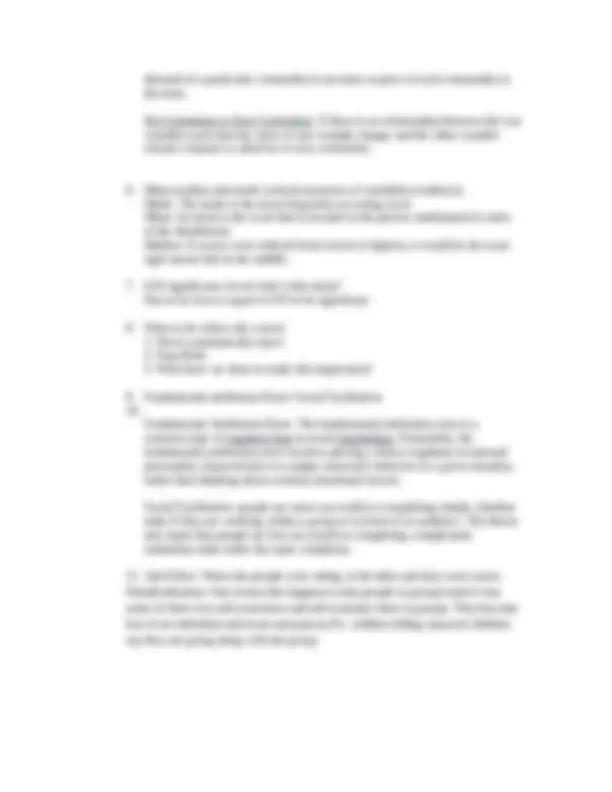



Study with the several resources on Docsity

Earn points by helping other students or get them with a premium plan


Prepare for your exams
Study with the several resources on Docsity

Earn points to download
Earn points by helping other students or get them with a premium plan
Community
Ask the community for help and clear up your study doubts
Discover the best universities in your country according to Docsity users
Free resources
Download our free guides on studying techniques, anxiety management strategies, and thesis advice from Docsity tutors
A psychology quiz covering various topics such as naturalistic observations, case studies, internal and external validity, independent and dependent variables, correlation coefficients, positive and negative correlation, central measures of variability, significance level, fundamental attribution error, and social facilitation.
Typology: Quizzes
1 / 2

This page cannot be seen from the preview
Don't miss anything!


Psychology Quiz #
demand of a particular commodity is increase as price of such commodity is decrease. No Correlation or Zero Correlation: If there is no relationship between the two variables such that the value of one variable change and the other variable remain constant is called no or zero correlation.